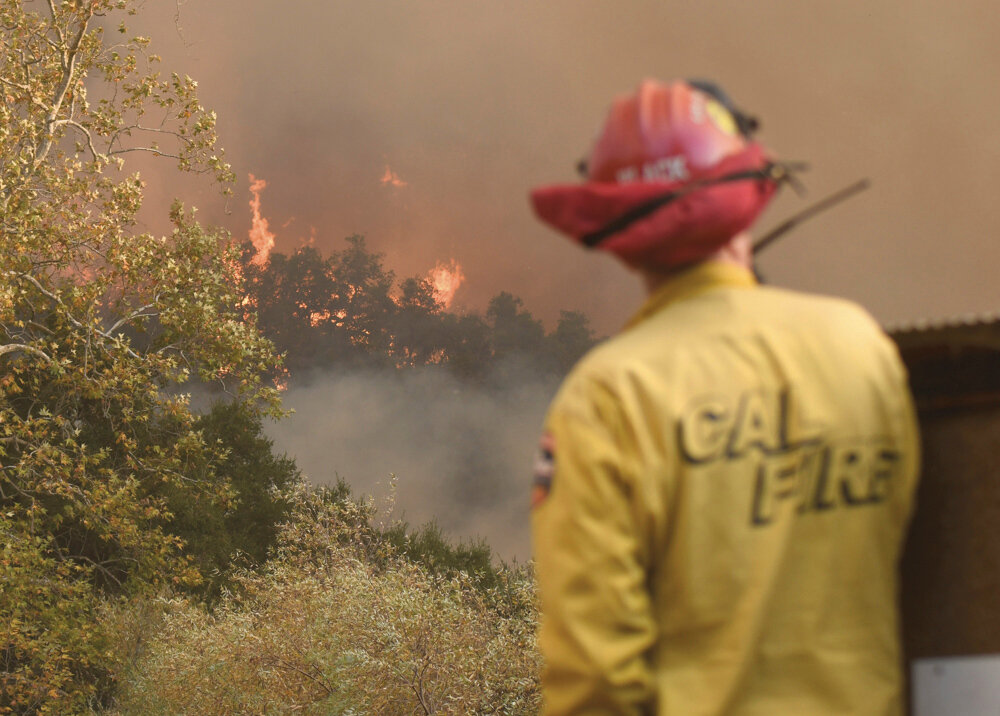
Wildfire Resilience
Reducing wildfire risks has always been a high priority for the fire-prone Central Coast. There is a lot of emphasis on protecting the wildland/urban interface (WUI) areas where homes are at significant risk from fire originating in forests and wildland areas. However, climate-driven conditions have elevated fire risks well beyond the wildlands and into neighborhoods and downtown areas.
CEC is working with key local organizations and agencies on fire resilience and readiness in the region to fill gaps in how we respond to and safeguard the community against the threat of wildfires and smoke, including:
Urban neighborhoods often lack adequate information about and preparation for fast moving wildland fires
There are not enough places for people to retreat to during disasters and extreme weather events
Uncoordinated efforts cost livelihoods and resources while risking lives
Non-inclusive planning practices don’t take advantage of the broad range of resources, wisdom, and solutions the community has to offer
Equity is not always a top-line priority in action planning, communication, and distribution of resources
To address these gaps, agencies, organizations, and stakeholders must coordinate efforts so that resources and actions are equitably leveraged for the greatest community benefit. This requires collaborative and inclusive processes that engage, elevate, and empower diverse voices in prioritizing solutions.
WHAT CEC IS DOING
Chumash Good Fire Project
Led by the Santa Ynez Chumash Environmental Office, the Chumash Good Fire Project is building collaboration between fire agencies, land managers, conservation organizations, and Chumash communities to incorporate traditional cultural burning into fire management plans. Learn more, including about the recently published Good Fire Guidelines, here: www.returngoodfire.org.
Santa Barbara County Wildfire Resilience Collaborative
The Community Environmental Council is a key partner in the Santa Barbara County Wildfire Resilience Collaborative (WRC), a team that is conducting outreach to plan and build capacity support for 10-12 wildfire resilience and habitat restoration projects within riparian corridors in Goleta and potentially other unincorporated areas in the County. The project goal is to align stakeholders and define projects in creeks to prepare them for site-specific restoration and wildfire risk reduction planning. The team is currently preparing criteria together with key partners that will assist with prioritizing areas that will yield the greatest benefits from a focused restoration effort. Learn more.
How to Take ActioN
Learn more about the Wildfire Resilience Collaborative and active regional projects that mitigate fire risk, build community capacity and increase wildfire and climate resilience.
Visit the Santa Barbara County Fire Safe Council website and social media channels to get information about upcoming events, resources, and updates focused on local fire resilience
Find resources to learn more about the Chumash Good Fire Project here: returngoodfire.org/public-resources
Background on this work
CEC’s current work on wildfire resilience emerged from a November 2019 Wildfire and Smoke Climate Resilience Roundtable convened and conducted with our Regional Priority Plan for Fire Resilience (RPP) Partners. Over 130 community leaders came together to become more informed on the latest expert perspectives on wildfire and smoke and their impacts on the community, and to identify pathways for strengthening community resilience against catastrophic wildfire.
The roundtable identified dozens of high impact community needs and opportunities from key stakeholders and leaders. Our community engagement effort then built on this roundtable beginning with in-depth interviews with more than 40 key stakeholders actively working on issues related to the management of fire activities in Santa Barbara County. The information gleaned from the Roundtable and subsequent interviews informed CEC’s work on the Regional Priority Plan, the Regional Wildfire Mitigation Plan, and our ongoing collaboration on the Chumash Good Fire project.


